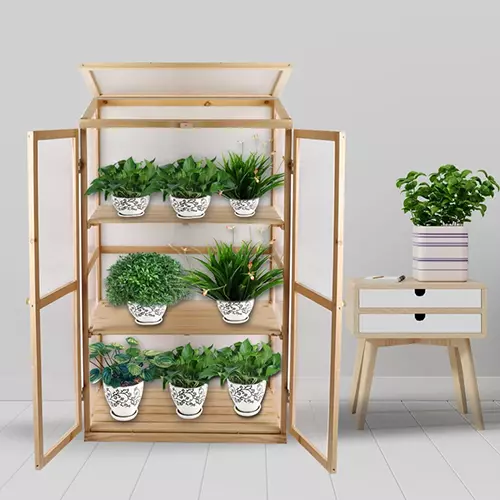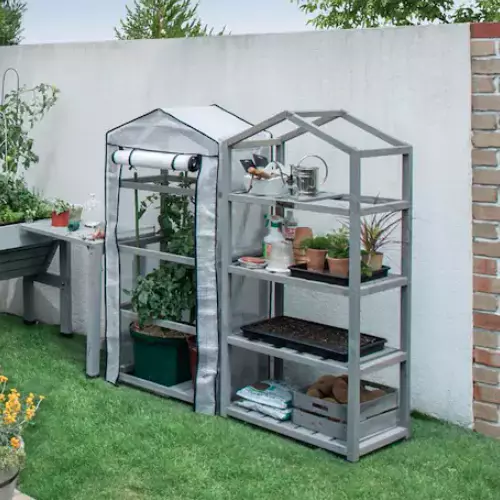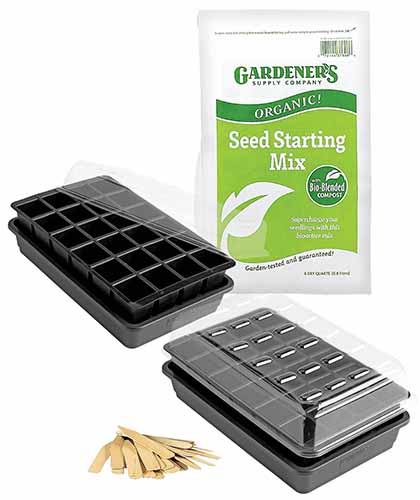Looking to start seeds indoors, improve conditions for houseplants, or protect tender perennials during colder months?
Constructing an indoor mini greenhouse is an easy and affordable way to create the perfect environment for growing plants inside your house.
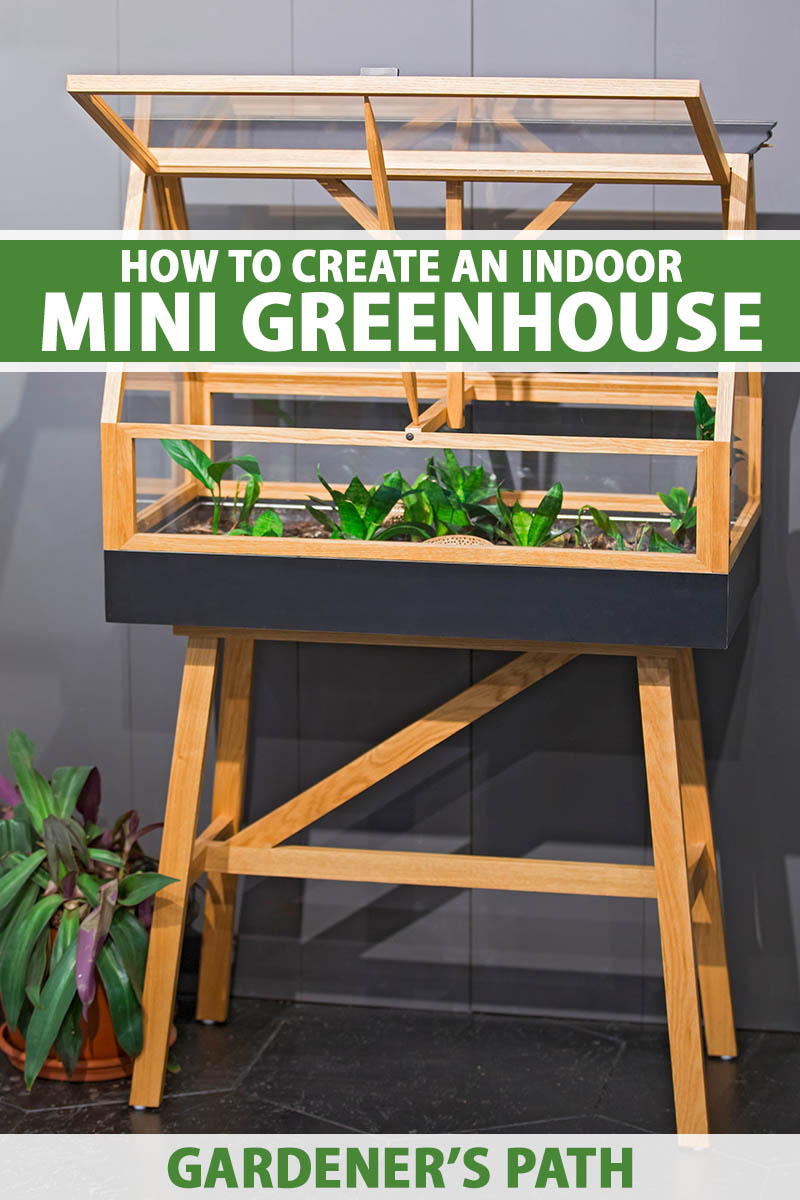
We link to vendors to help you find relevant products. If you buy from one of our links, we may earn a commission.
With so many simple and cheap DIY options available, you can easily create one to fit your needs.
Read on for tips and ideas for building your own DIY mini greenhouse.
What You’ll Learn
Benefits of Indoor Greenhouses
Often, one of the biggest challenges to starting plants from seed is figuring out where to place them to ensure optimal growing conditions.
If you do not have access to a heated greenhouse, starting them inside your home may be the best option. But cold winters can make homes drafty and dry, not at all ideal for producing happy seedlings.
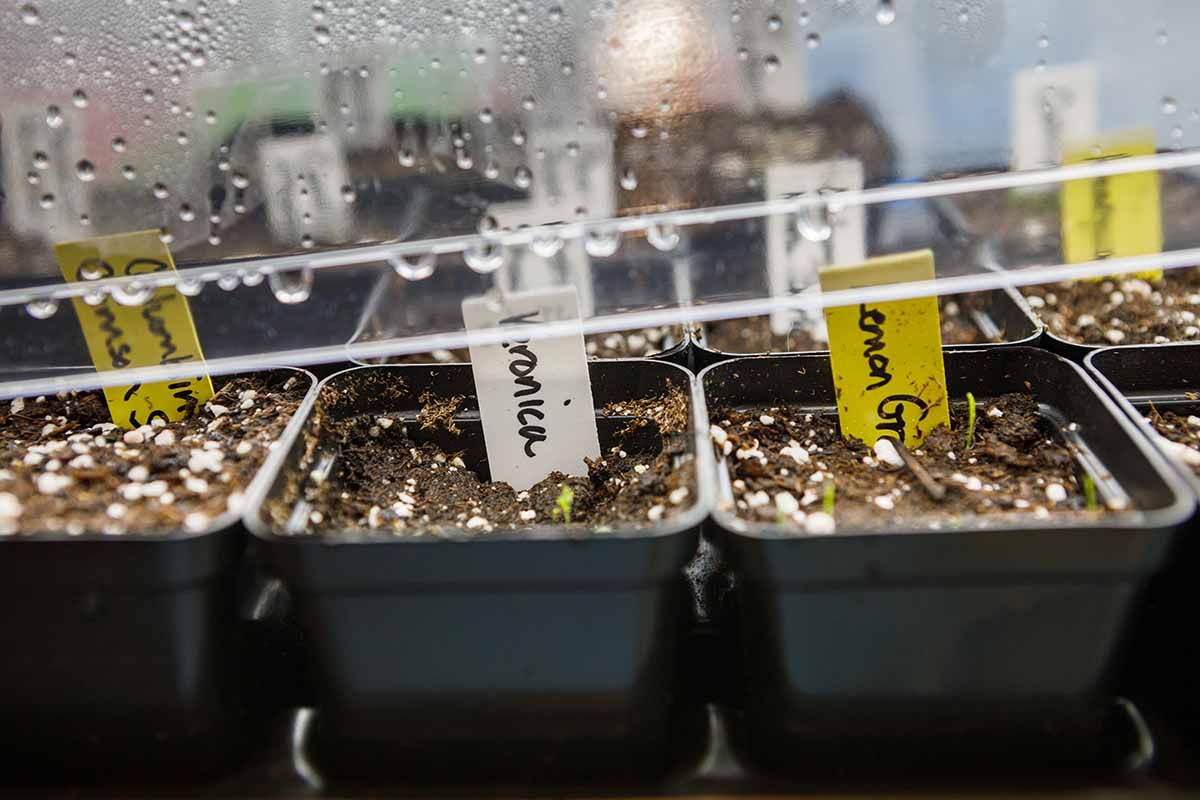
The chief goal of an indoor mini greenhouse is to create a structure that keeps the soil and air warm and moist, with a suitable microclimate for seedlings and tender plants.
This will help seeds germinate more quickly, improve conditions for tropical houseplants, and reduce the risk of shock when moving outdoor plants inside for winter.
While you can certainly purchase an indoor greenhouse online, one major benefit of making one yourself is that you can select a design and size that meets your specific needs.
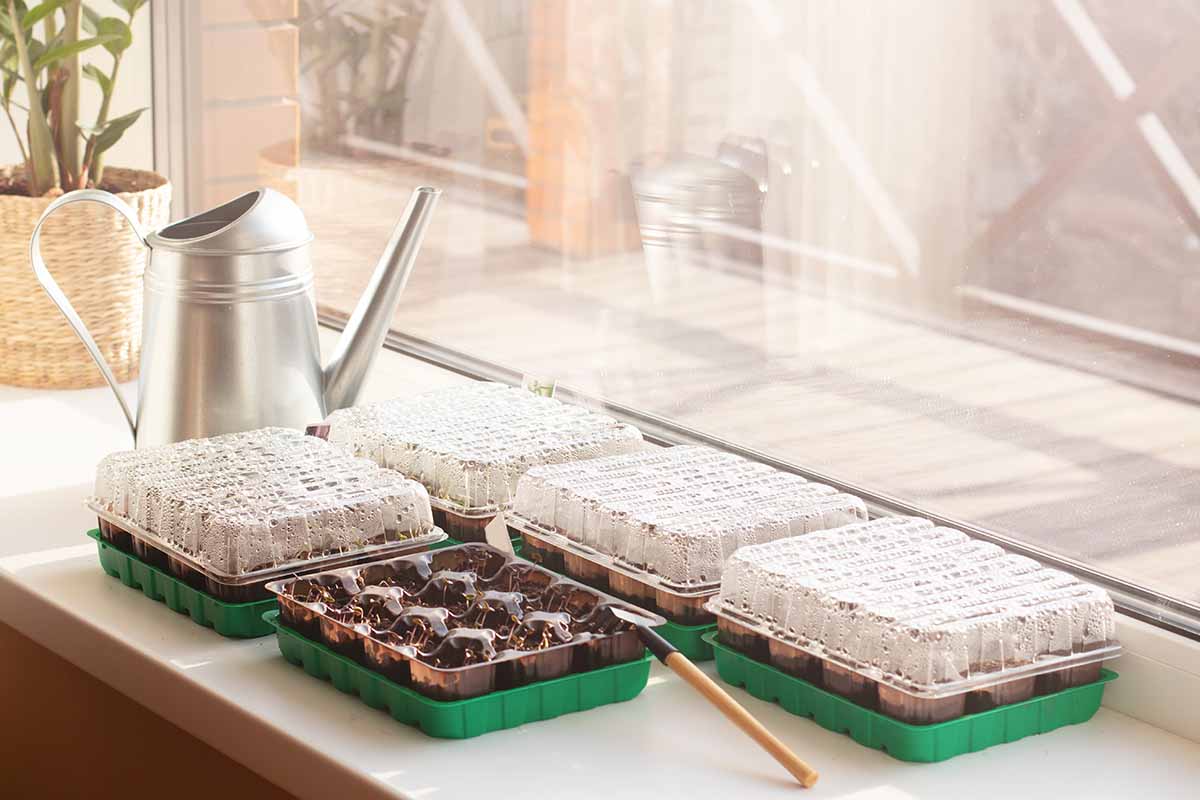
For instance, a small and simple one made from plastic containers or egg cartons can easily be moved around to different windows in your home based on changes in sunlight.
Or you might choose a larger glass case that will fit beautifully with your decor while housing many plants.

And last but certainly not least, the price just can’t be beat. Many DIY ideas utilize materials you likely already have laying around the house, potentially making this project free!
Growing Indoor Seedlings: Super Cheap Ideas
If you are mainly looking for a way to germinate seeds indoors, there are a number of super simple and virtually cost-free ideas you can draw from. Here are just a few to get you started:
Perhaps the simplest requires just some egg cartons and plastic wrap. This method is especially convenient if you are just looking to start a few seeds, as it doesn’t take up much space and sits easily on a windowsill.

Simply fill each well in the carton with potting mix, sow your seeds, water, and cover with plastic wrap or a plastic lid. Make sure to cut a few tiny holes in the plastic for airflow. Set the carton on a sunny windowsill and you’re done!
Along the same lines, you can use a clear plastic food container such as an old salad greens container filled with soil and covered with plastic.
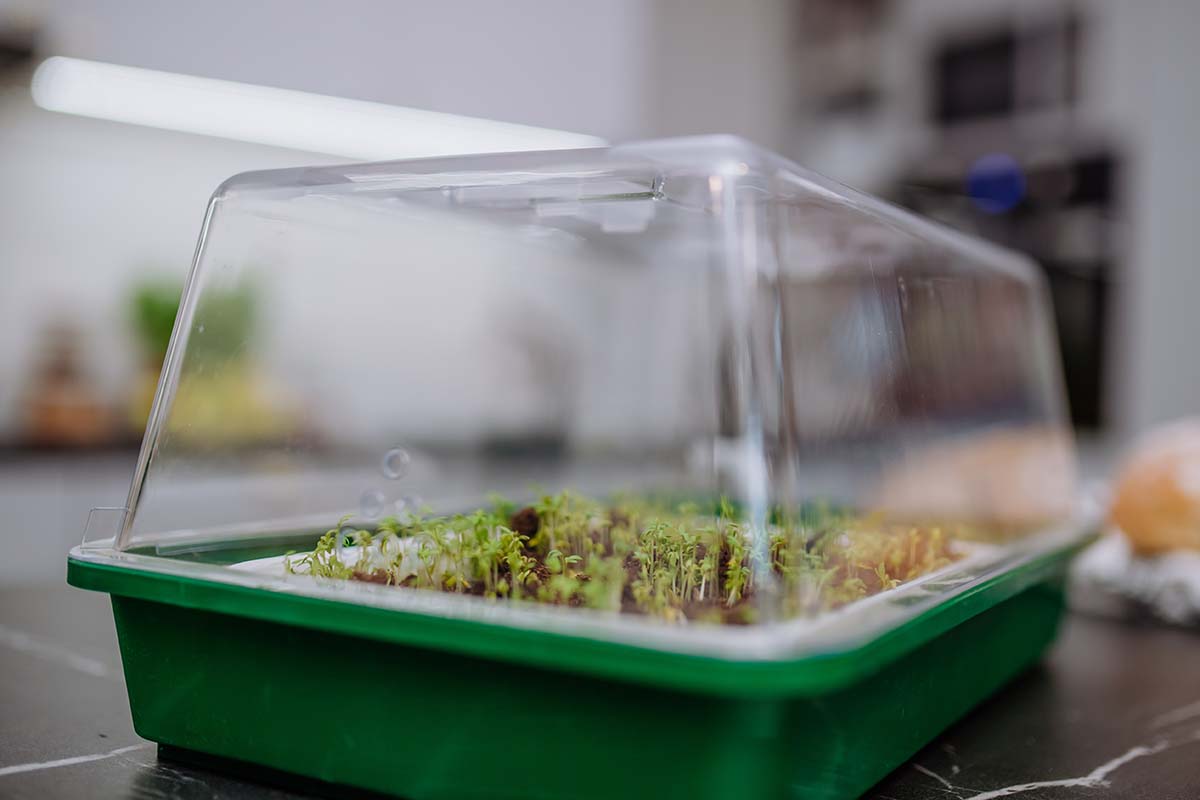
Even a large plastic tub-style storage bin covered with plastic can function as a greenhouse!
You can also create a simple one with plastic bags or sheeting tied over the top of a plant.
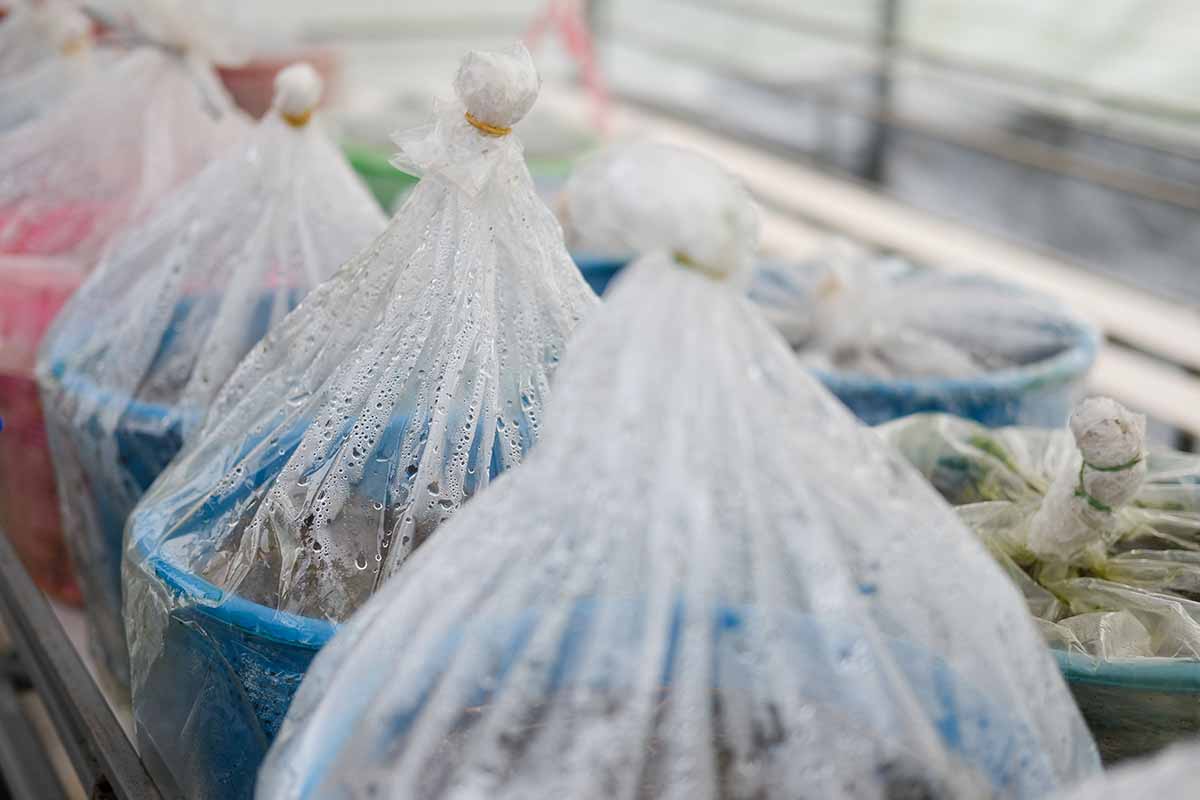
A larger version of this can be made by arranging wooden popsicle sticks, skewers, or even sticks into a box, fastening them together with glue and string, and covering the whole thing with a large clear plastic bag or sheeting.
Really, anything clear can be used, such as a large soda bottle, mason jar, or glass lantern. Just put your plants inside, close it up leaving a little room for airflow, and you are done!
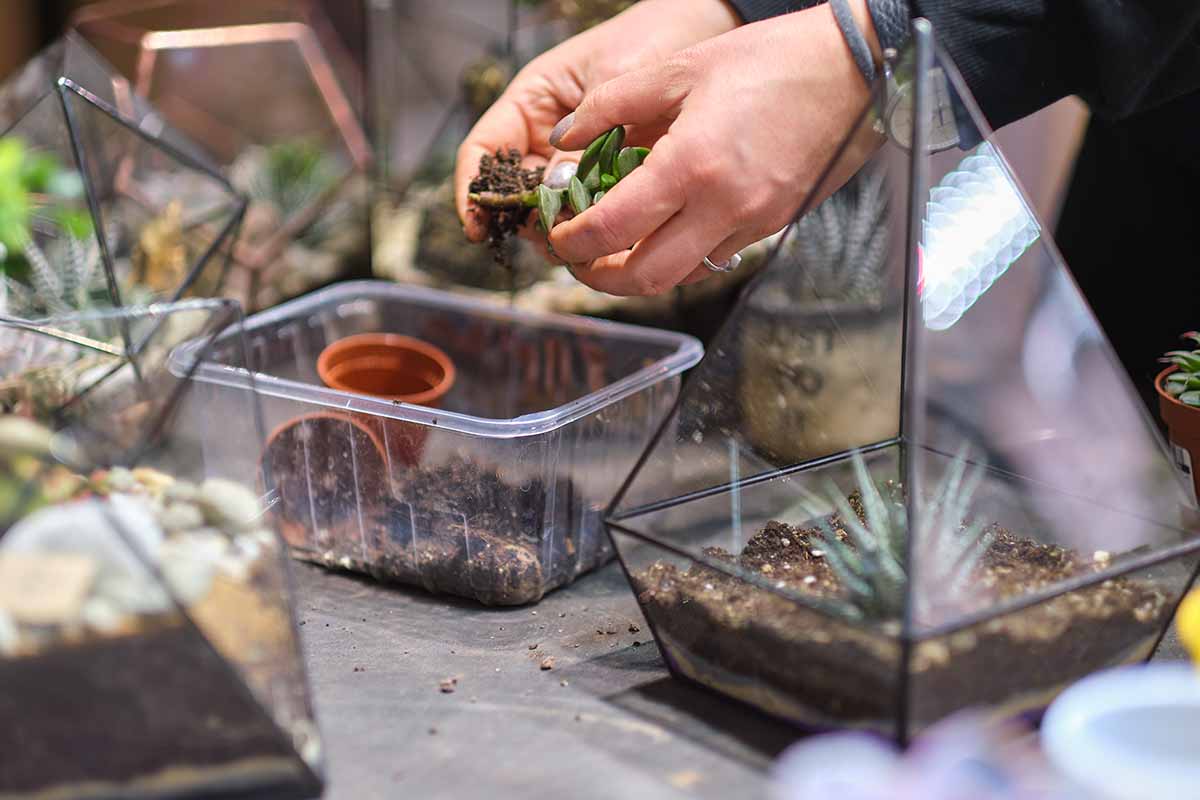
No matter which materials you select to use, it is important to make sure there is ventilation.
Cut some small holes or slits in the plastic wrap or container, use a mini fan, or prop open the lid slightly to allow for airflow.
Larger Designs for Seedlings or Potted Plants
For growing many seedlings at once or for larger potted plants, you may want to construct something larger and sturdier.
One cheap DIY idea is to use a bunch of old picture frames. Thrift stores and yard sales are great places to look for these.

A pitched roof greenhouse can be easily made using four eight-by-10-inch and four five-by-seven-inch frames.
Start by removing the frame backs, setting the glass and the frames aside.
Use a hot glue gun or strong adhesive to glue the four eight-by-10-inch frames to each other to create a four-sided box, arranging them so they will stand eight inches tall with 10 inches in length on either side.
Next, use the five-by-seven-inch frames to create the roof.
Glue these together in pairs to create two pieces that are 10 inches long and seven inches wide. Allow them to dry fully, then set them atop the box base and glue them together to form a triangular pitched roof.
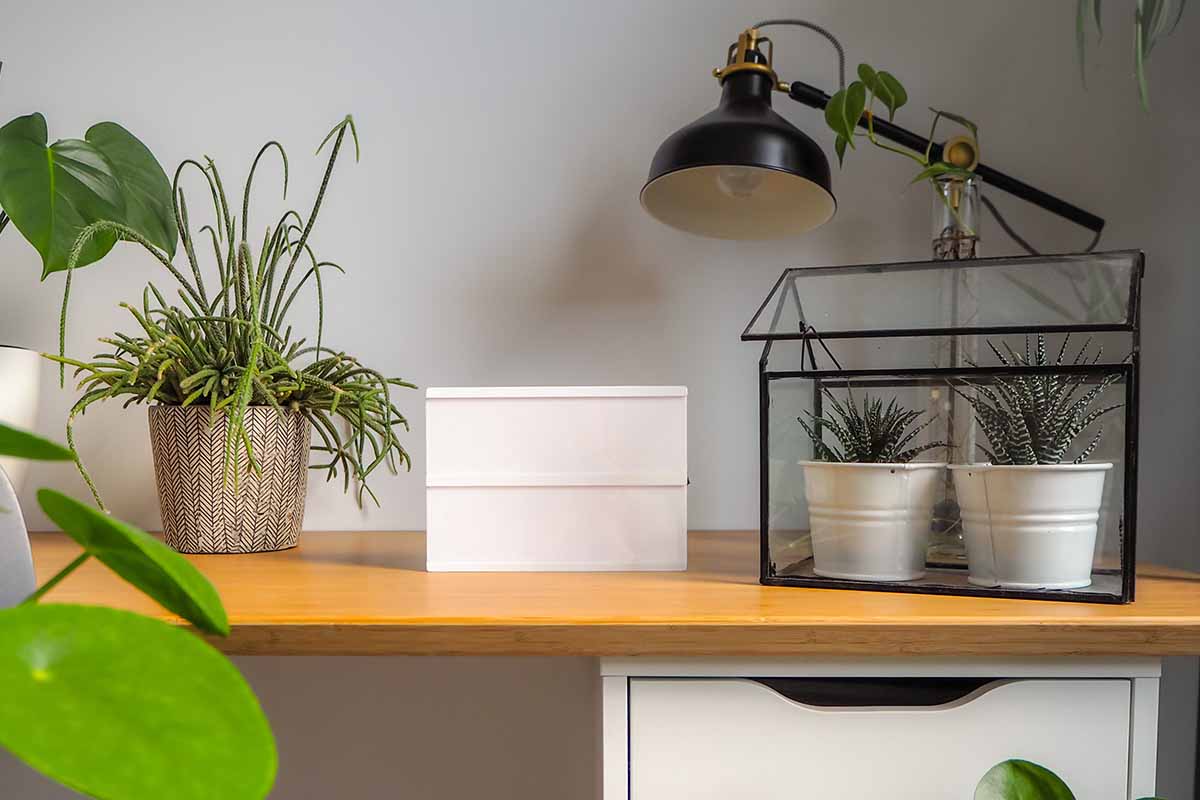
Another idea that is great for a larger number of plants is to convert a glass cabinet into a greenhouse.
This option is a bit pricier, unless you happen to have an old glass display case in the garage or gathering dust in your attic, but it doesn’t take much work to adapt for gardening. Just be sure to put a mini fan inside the cabinet to increase airflow.
You can also choose to string grow lights above the shelves, which can be useful if you want to place the cabinet somewhere in your home that does not receive a lot of natural light.
Buy a Ready-Made Greenhouse
If you don’t have the time or interest in completing a DIY project on your own or with the kids in your life, there are many indoor greenhouses available for purchase in various styles and sizes.

This cabinet from Bigtree that’s available via Wayfair is designed specifically for cultivating plants.
With a fir frame and translucent frosted polycarbonate panels, it has doors that open on the front as well as an accessible roof, built-in vents for air circulation, and slatted wooden shelves for easy drainage.
It can also be used outdoors and is weather resistant.
Easy to assemble, this freestanding cabinet measures 25.5 inches wide by 15.5 inches deep and 39 inches tall, and it weighs just over 15 pounds.
For larger setups, Home Depot sells a nursery-style greenhouse from VegTrub that is adjustable, easy to use, and can be set up indoors or out.
While it may not be the most beautiful of displays for the living room, it would be put to good use on a three-season porch or combined with grow lights in a back room.
VegTrug Wooden Greenhouse Nursery with PE Cover in Gray
With a cedar wood frame and four adjustable shelves, the reinforced poly cover is easy to open and close as needed.
This greenhouse measures 28.3 inches wide by 19.6 inches deep and 63 inches tall, and it weighs 26 pounds. Assembly is required.
For simple seed starting, you can always go with a standard nursery tray with a vented humidity dome.
GrowEase Seed Starting Success Kit
These can be purchased separately or as part of a seed germination kit, such as this one from Gardener’s Supply.
The Sky’s the Limit!
The suggestions described here are by no means your only options. There are so many materials you can use, both reclaimed and new, to create the perfect indoor growing environment.
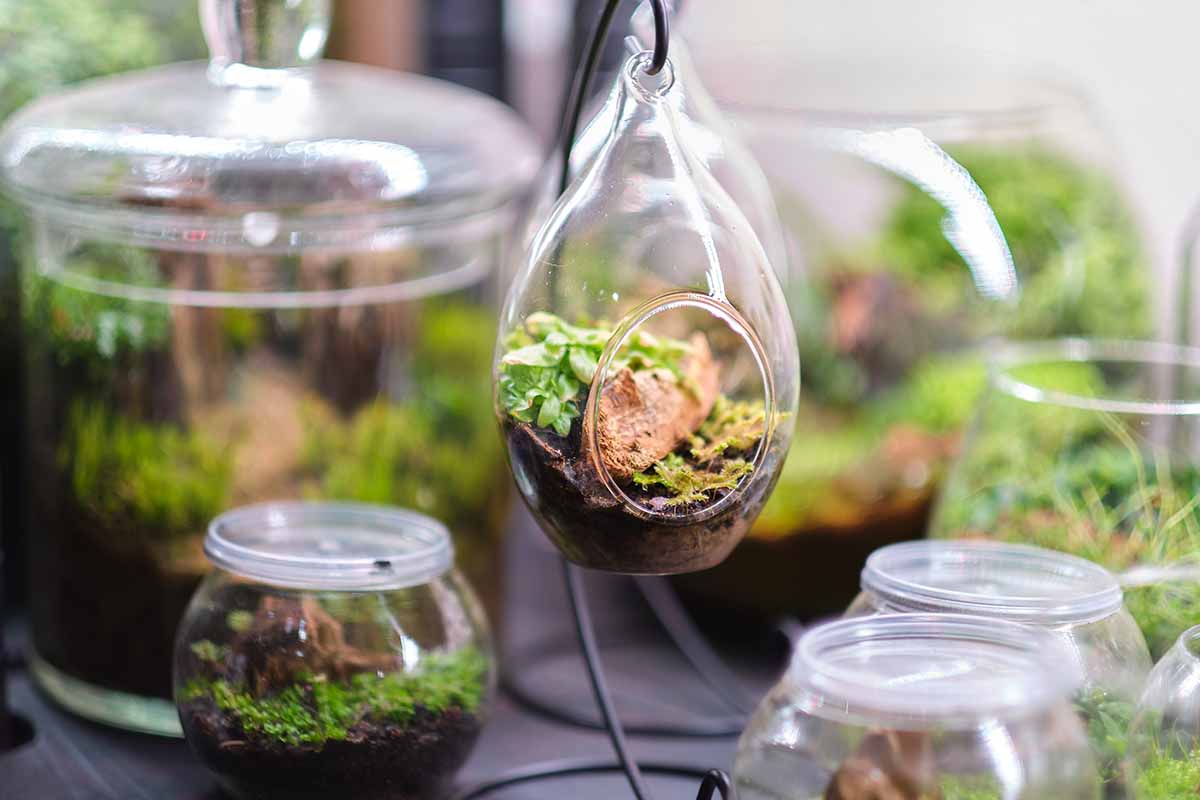
Whether you are looking to start a few seeds, grow tropical plants, or protect tender perennials through the winter, a mini DIY greenhouse will serve you well.
Simply take stock of your supplies, get creative, and have fun!
Do you have experience constructing an indoor mini greenhouse? Please share your tips and photos in the comments below!
For more information about growing in greenhouses and cold frames, check out these articles next:
